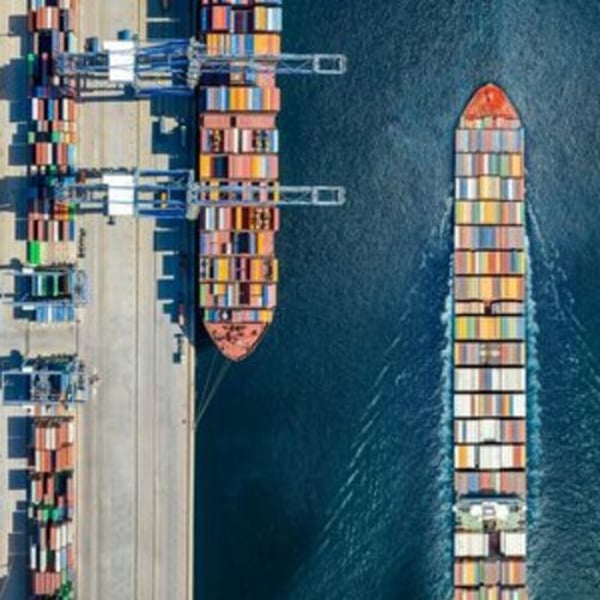Translated by
Nazia BIBI KEENOO
Published
September 26, 2025
Persistent political instability, robust container demand, and the need to modernize fleets could once again drive up sea freight rates, according to the United Nations Conference on Trade and Development (UNCTAD). This warning comes as working conditions for seafarers remain a concern in an industry responsible for transporting 80% of global goods.

UNCTAD expects maritime trade to grow by just 0.5% by volume in 2025, and containerized transport by 1.4%. This marks a slowdown after increases of 2.2% and 5.9%, respectively, in 2024—a year in which the Red Sea crisis, with pirates attacking ships transiting the Suez Canal, led to a rise in container prices. That situation persists.
“Persistent geopolitical tensions in 2025 raise fears of repercussions that could disrupt maritime activity in the Strait of Hormuz,” the United Nations said. “Persistently high transport costs are likely to hit developing countries hardest, particularly small island developing states (SIDS) and least developed countries (LDCs).”
The UNCTAD report also highlights the impact of the U.S. trade war with supplier countries, which could lead to a reconfiguration of shipping lanes. In addition to new U.S. tariffs, port restrictions and customs measures have been tightened for ships built or operated outside the United States. “The result is more rerouting, missed port calls, longer voyages and, ultimately, higher costs,” the document notes.
More responsible fleets
Another factor driving up costs could be the passing on of investments made to make fleets more environmentally responsible. Only 8% of global tonnage is currently equipped to use alternative fuels. Yet greenhouse gas emissions from shipping rose by 5% in 2024. Significant investments linked to decarbonization are therefore likely, once again, to push up container prices.
“The International Maritime Organization’s (IMO) ‘Net Zero Emissions Framework,’ which is due to be considered for adoption in October 2025, will set a global fuel standard and introduce a GHG pricing mechanism from 2028, with a fund that could support developing countries.”
Set to enter into force in June 2025, the Hong Kong Convention on ship recycling and environmental responsibility is expected to cover approximately 90% of the world fleet. UNCTAD is urging ports to assume greater responsibility for their operations and prevent bottlenecks by implementing simplified digital procedures, thereby reducing additional costs and delays.
Better protection for seafarers
On the human rights front, the report notes that 2024 was a record year for seafarer abandonments. It cites non-payment of wages, failure to supply food, water or fuel, and, more broadly, situations where shipowners leave crews to fend for themselves.
According to the International Transport Workers’ Federation (ITF), 3,133 seafarers and 312 ships were affected last year. In 2027, an amendment to the Maritime Labour Convention will strengthen the repatriation and shore leave rights of seafarers stranded in foreign ports—an important step for a freight industry that employs 1.9 million people.
Container prices peaked again in June and July. The Shanghai–New York route reached $7,285 before falling back to $3,571, according to the Drewry benchmark index. The Shanghai–Los Angeles route peaked at $5,914 before easing to $2,561. Shipments from China to Genoa and Rotterdam experienced a more limited peak, now standing at $2,131 and $1,910 per container, respectively.
This article is an automatic translation.
Click here to read the original article.
Copyright © 2025 FashionNetwork.com All rights reserved.







